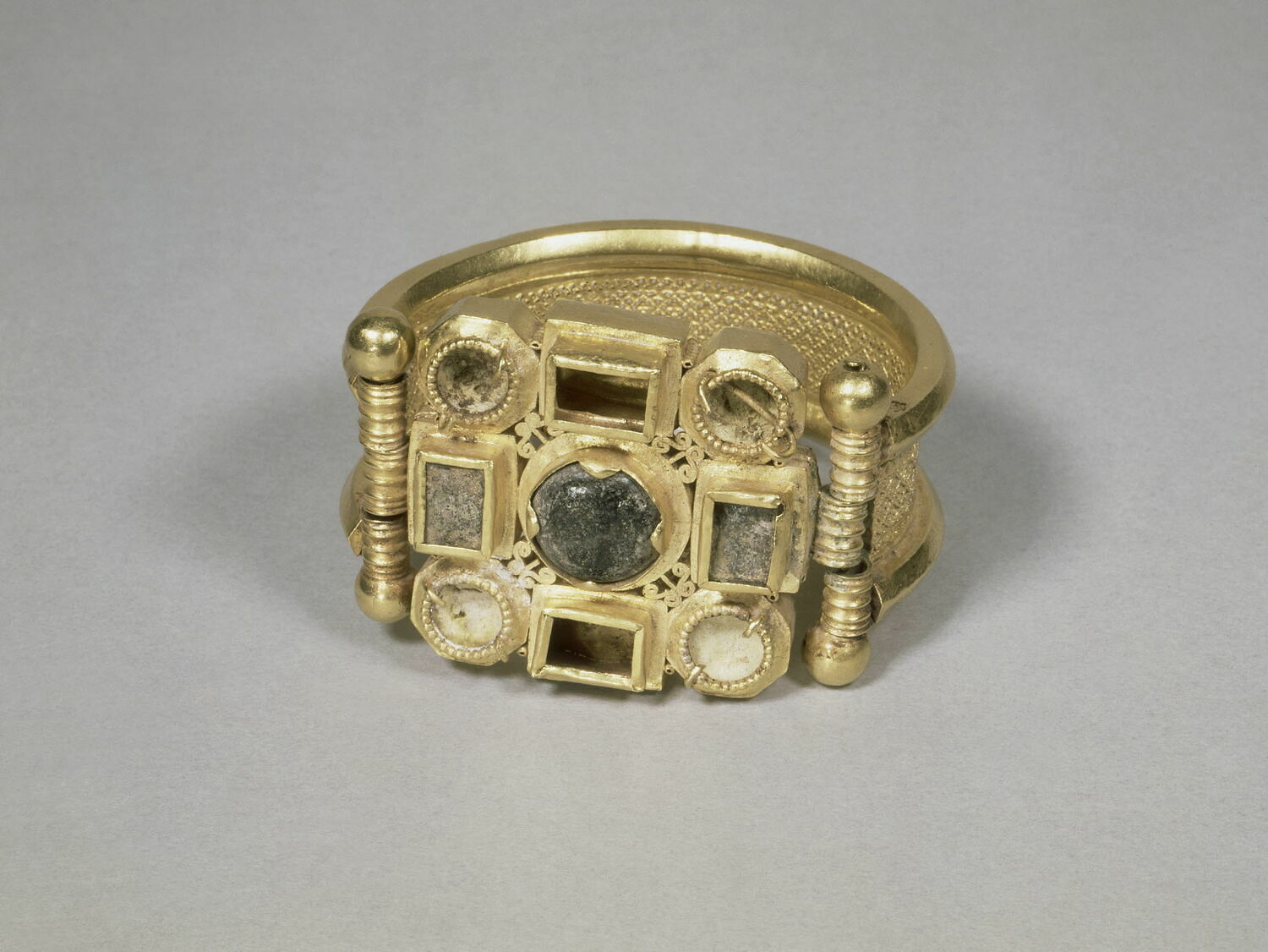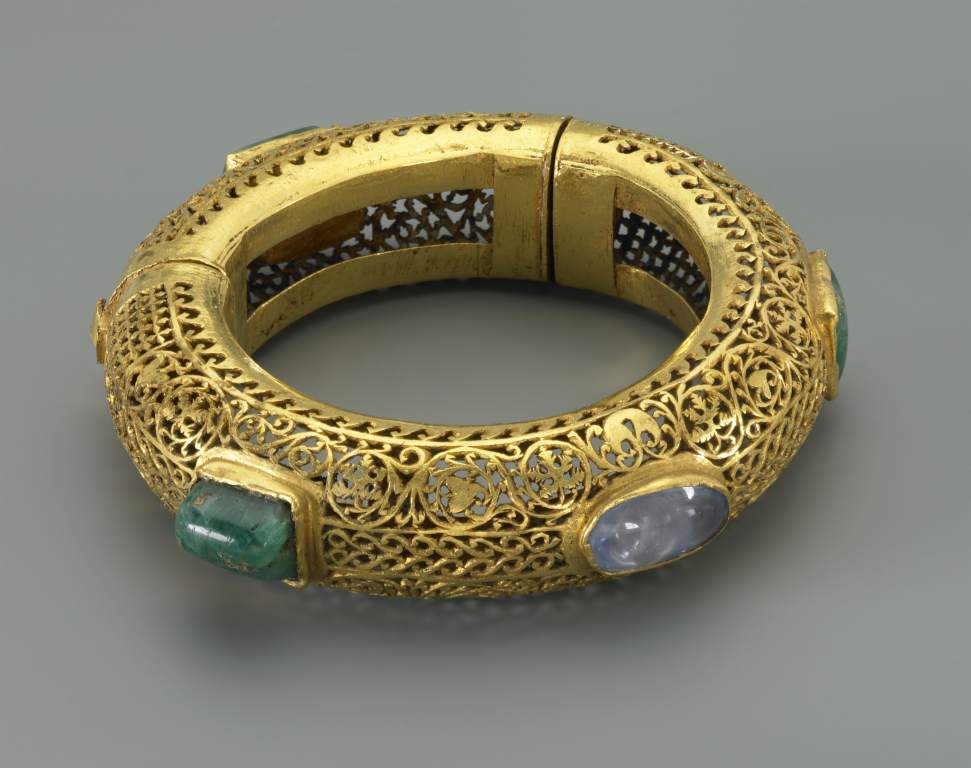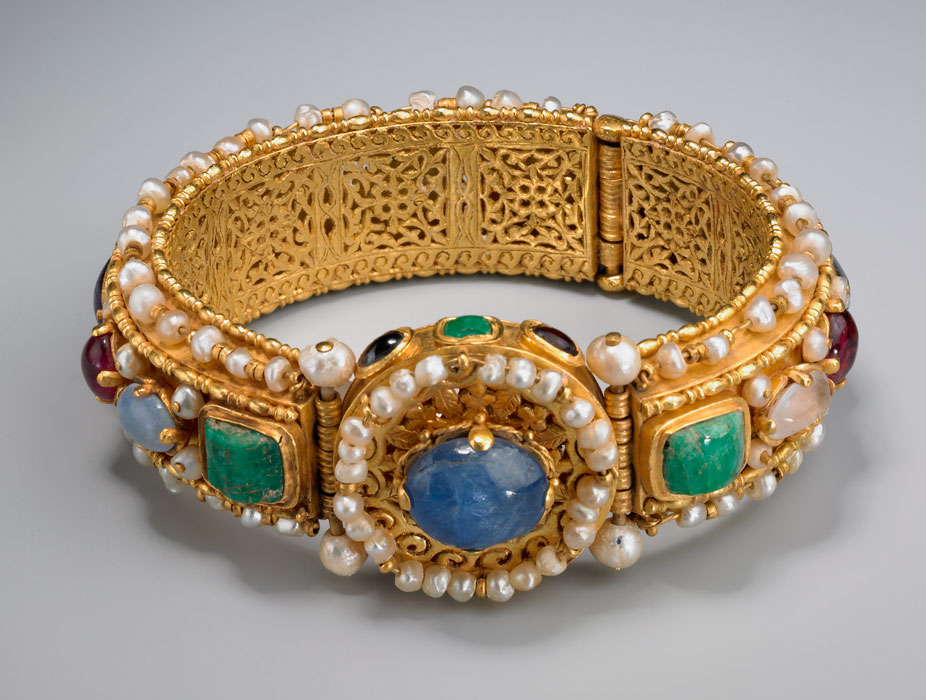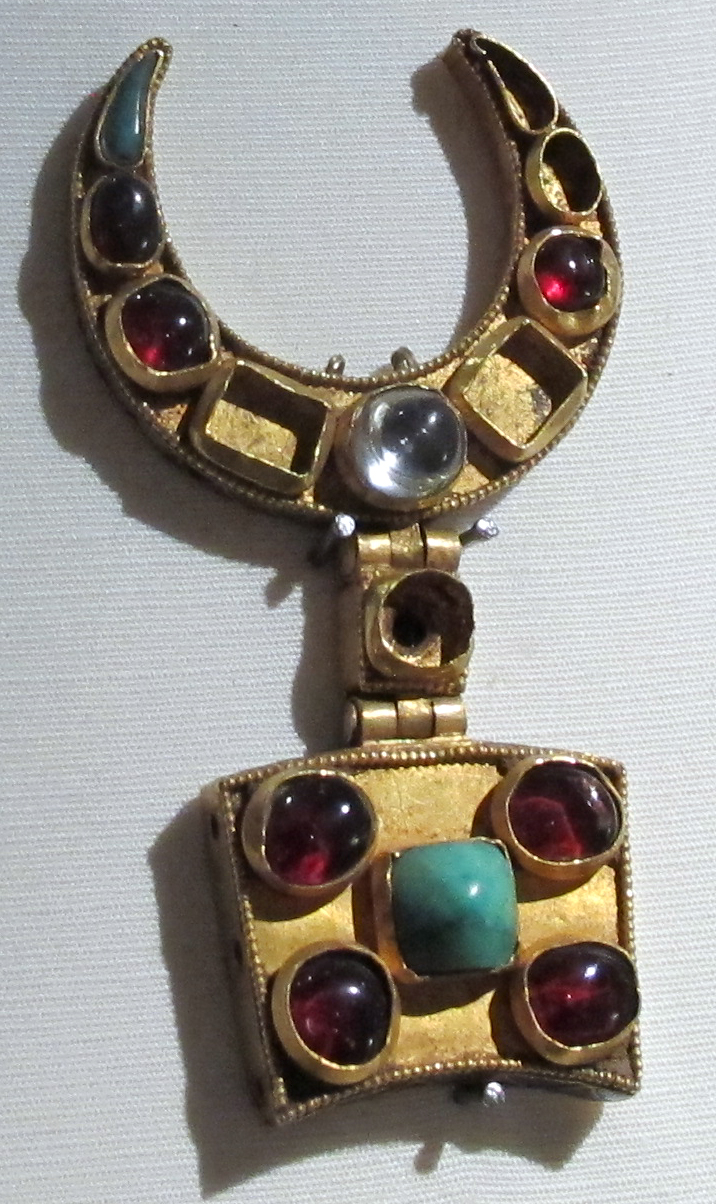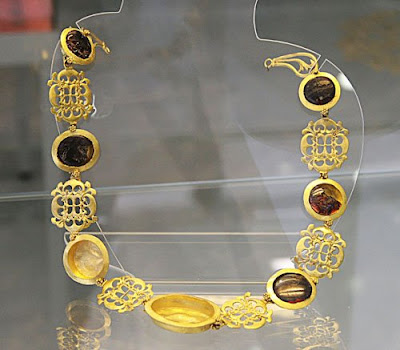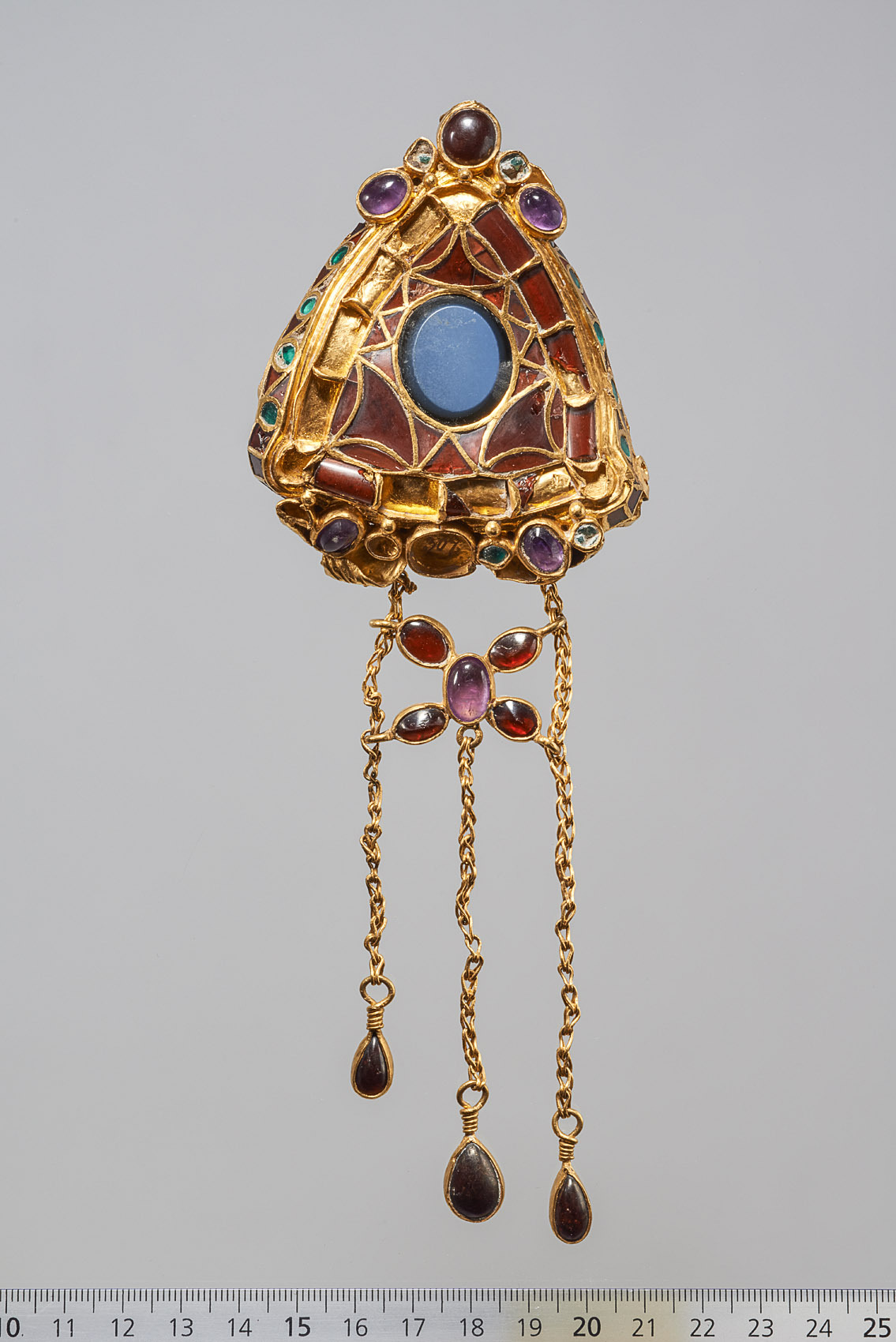The first Byzantine treasure from Odessos (today Varna) consists of 11 gold objects with a total weight of 417 grams – two bracelets, a diadem, three necklaces (one complete and two partially preserved), a cross and two belt appliqués. It was discovered by students in 1961 during the construction of a summer cinema on “Knyaz Boris” street in Varna. “The site is situated also outside the ancient city, some 300 m northeast of its Late Antique/ Early Byzantine fortress wall and next to the ancient road leading north of the city: from Odessos to Dionysopolis (Balchik), another ancient town on the Western Black Sea coast”. All items were delivered to the Varna Museum of Archaeology. [Alexander Minchev]
The treasure consisted of a diadem, a necklace and two bracelets decorated by semi-precious stones, pearls and enamel, a large cross and two belt-segments made in cloisonné, etc. Some of the jewellery-pieces were only fragments preserved.
“Several of them were produced in the Early Byzantine tradition of goldwork but other adornments (including the cross) have been made in the so called barbarian style: in cloisonné technique with inlays of garnets and malachite. The treasure has been dated to the 6th century AD and is one of the most attractive and valuable ones discovered in the Early Byzantine Empire so far.” [Alexander Minchev]

From the top:
1. a diadem
2. a belt
3. a diadem
4. a cross
5. two pieces of a belt
6. a necklace [one of three, the only one that has survived complete]
7. pair of bracelets

[read more]
Bracelets weight 220 g – the half of the entire find. They consist of two parts – the ends of a wide, arched openwork strips are attached by a hinge of a round plate.
The stripes are decorated with the winding vine with bunches of pearls. The face of the medallion is decorated with geometric ornaments, the cells of which are filled with glass and a large pearl in the middle. A bird is depicted on the reverse side of the bracelet.

RMH Varna, inv. N 561 [THE MIRROR OF TIME]




“On the front side of the pectoral cross, rectangular cells and a stylized leaf are formed by means of thin plates. In the “leaves” are mounted green malachite plates, and in the rectangles around them – bright red plates of almandine (a type of garnet). On the reverse side of the cross there are plant motifs, but applied with an incisor.” [Ivalina Nenova]
- Alexander Minchev, THE THIRD EARLY BYZANTINE TREASURE FROM ODESSOS (VARNA) http://www.nisandbyzantium.org.rs
- The catalog of the exhibition: “THE MIRROR OF TIME: female beauty through the ages”, Sofia 2016
- An article by Ivalina Nenova The early Byzantine treasure from Varna https://www.nasamnatam.com
- Bulgaria in the Byzantine World – Exhibition at 22nd International Congress of Byzantine Studies, 24th August – 30th September 2011.
Authors and Editors: Margarita Vaklinova et al. (translated by Katya Melamed)
Bulgarian Academy of Sciences – NIAM, Sofia, 2011 - Identifying pierced gold jewellery made In the Imperial workshops of the palaces of Constantinople and Ravenna In the 5th century on technical and historical grounds; Balint Laszlo Toth https://www.academia.edu
- Fifteen Treasures from Bulgarian Lands, Dimiter Ovcharov, Sofia 2005
- http://dspace.nbuv.gov.ua/bitstream/handle/123456789/181646/10-Komar.pdf?sequence=1
- https://ibn.idsi.md/sites/default/files/imag_file/117_122_Despre%20unele%20trasaturi%20specifice%20ale%20giuvaergeriei%20byzantine%20din%20secolele%20VI%E2%80%93VII.pdf


